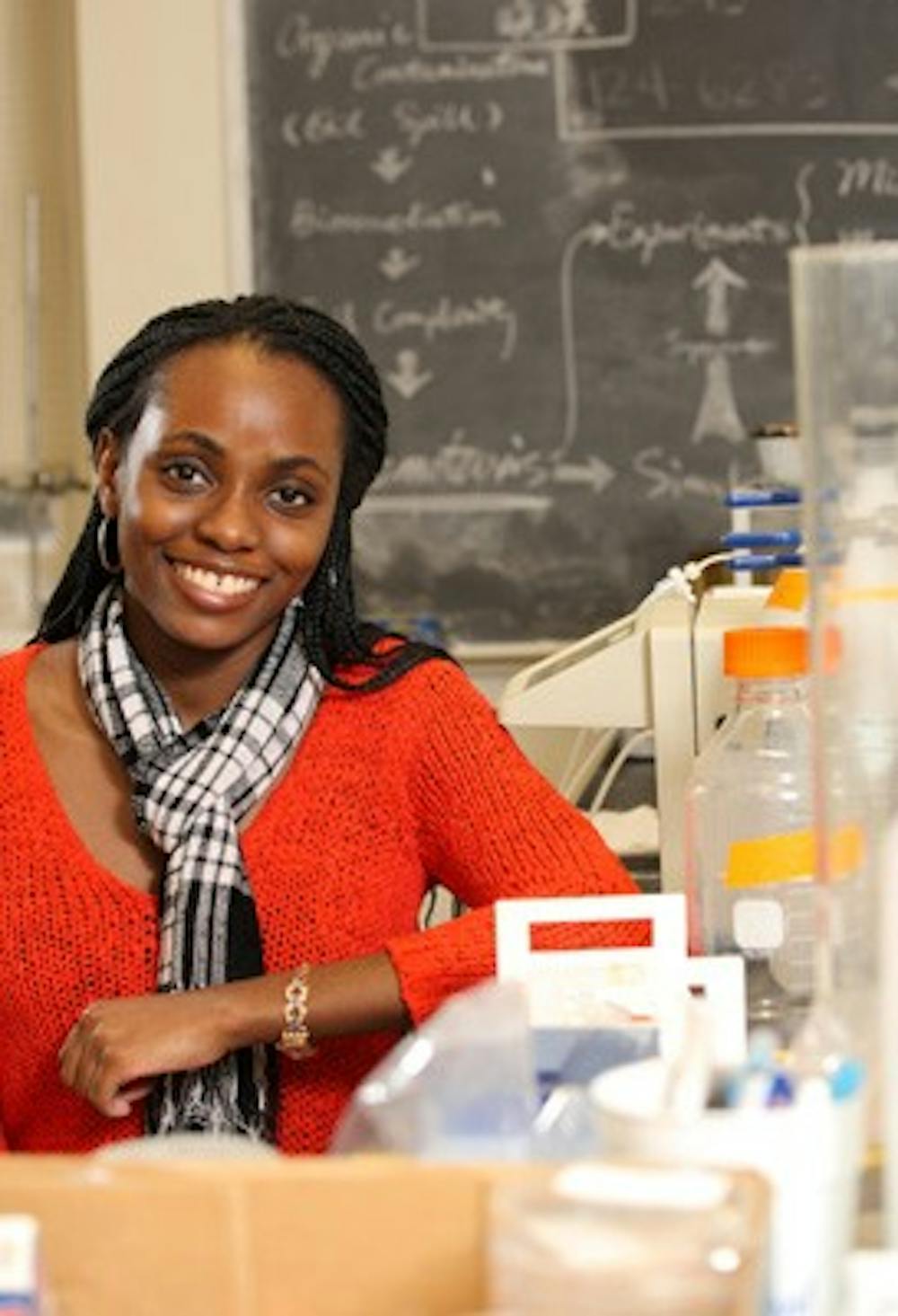Doctoral candidate Joanna Adadevoh was recently spotlighted by the University for her research into purification of contaminated groundwater through bacterial microbes. Adadevoh presented her research last fall at the ninth International Symposium on Subsurface Microbiology in California.
Growing up on the grounds of a teaching hospital in Nigeria, Adadevoh said she knew the lack of clean water in the country was a serious problem. When Adadevoh came to the United States to study, one research topic she said resonated with her was bioremediation.
“Chemotactic bacteria stood out to me as an interesting, useful and very applicable research topic,” Adadevoh said. “It was my first choice for my research project.”
Adadevoh’s research focuses on using chemotactic bacteria — bacteria that can seek out contaminates — to rehabilitate groundwater. She is focused primarily on contaminants from oil spills.
Chemical Engineering Prof. Roseanne Ford has worked with Adadevoh for two and a half years. She said Adadevoh found chemotactic bacteria are retained longer when in the vicinity of a chemical pollutant than bacteria without the ability to sense contaminates.
The chemotactic bacteria also have flagella, which enable them to move towards areas of heavily contaminated water.
“The chemotactic bacteria can move preferentially towards the contaminant, even when the contaminant is trapped in regions of low hydraulic permeability,” Adadevoh said. “This allows the chemotactic bacteria to have a greater advantage in contaminant clean up because they can detect where the contaminant is.”
The chemotactic bacteria can be an effective purifier because they require the chemical pollutants as a food source.
“It is great that the contaminants are a food source for the bacteria we are using, and that the bacteria can degrade them into less harmful chemicals,” Adadevoh said. “Typically the microbes are introduced into the site of contamination and allowed to degrade the contaminants, since they are a food source for the microbes.”
Ford said the bioremediation process with chemotactic bacteria Adadevoh is researching already occurs in the environment.
“Microorganisms that break-down chemical pollutants are naturally present in groundwater,” Ford said. “These processes are occurring to some extent all the time.”
Adadevoh said there are many benefits of using such a process, including no consequences to human health.
“The chemotactic bacteria that I use for my research are ones that are naturally occurring in the subsurface environment and do not pose any threat to human health,” Adadevoh said.
Additionally, many countries with polluted groundwater struggle to find economical solutions. However, Adadevoh’s research indicates the process could be economically feasible.
“Introducing the bacteria to the site of contamination requires less energy than traditional remediation techniques,” Adadevoh said.
Ford said the next step is to accurately model and predict how effective the chemotactic bacteria will be in bioremediation strategies.
“As engineers we are trying to develop quantitative models, so we can determine under what conditions at a particular location, bioremediation is feasible,” Ford said. “The next step is to quantify this observation in terms of parameters that can be used to predict what would happen in more complex natural systems beyond the controlled laboratory experiments.”
Adadevoh said she hopes her research leads to a widespread solution for cleansing contaminated groundwater.
“The hope is that the process can be easily applied and economically feasible for countries with unsafe groundwater,” Adadevoh said.
Adadevoh plans to model the results of her experiments mathematically, which could increase the applicability of her work before she presents her results to the American Geophysical Union later this year.







